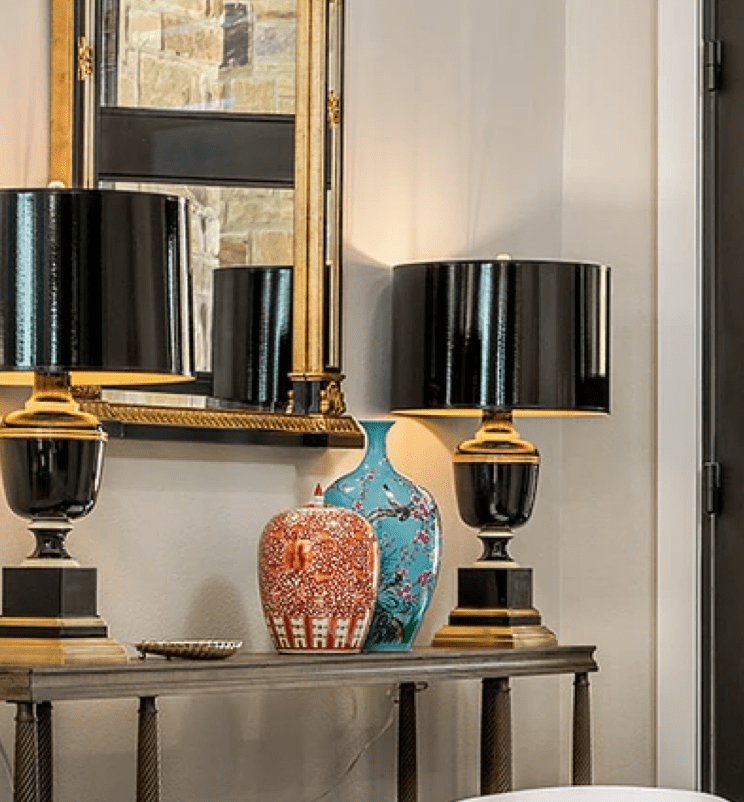Color, no color, a pop of color—what is a designer to do?
Color is one of the most powerful tools in interior design, shaping the mood, atmosphere, and overall experience of a space. When used thoughtfully, colorful interior design can transform a room, making it feel more expansive, cozy, vibrant, or serene.
The inner workings of color reveal the emotional side of the room’s story—when this happens, like with any good painting, the story begins.
At Core Design, John will tell you:
“Color is personal and most everyone has a favorite or two—this individual choice is unlikely to change given outside influence. With that being said, talented designers understand this deeply personal choice and how it can influence a client’s choice on a project going forward.
The room at stake and everything placed in it will undergo a transformation into something new. Spaces are like the artist’s canvas, where color is key to setting the mood. I have my favorite colors and generally keep them to myself when visiting a new client, preferring instead to pick their brain for a preferred style and color scheme.
The colors of a room should reflect the style of the structure and the room’s dressings. Choosing a room’s color is the toughest choice with which a client comes to terms. How well designers know instantly a room’s vibe for its refreshing alteration. Convincing the client is often a differing set of hurdles.”
Here’s a guide we’ve put together to help you in designing a room’s atmosphere with color. The color of walls, furniture, textiles, and accessories all contribute to the overall ambiance of a space. Above all else, have fun in the process of getting to know yourself in a new way with color!

Understanding the Psychology of Color
Color plays a part in interior design by eliciting a certain response. We know different colors can affect our emotions, behaviors, and perceptions. Do you know what colors evoke certain emotions in you?
Neutrals
From our perspective, whites, grays, and beiges offer versatility and can serve as a backdrop for other colors. They can make a room feel more spacious and balanced, with a Zen-like quality. Combining neutrals with bolder colors can benefit any room by creating contrast and interest.
A neutral palette complements all design styles and allows for easy additions when the time comes to freshen up a room.
Warm Colors
Bright, bold, and muted reds, oranges, and yellows are energizing and stimulating to a room. These color palettes can invigorate a space, as if to say, welcome in! Ideal for social areas like living rooms or dining areas, where they encourage conversation and activity.
Cool Colors
Calming and soothing effects are what you’ll find with blues and greens. They work well in bedrooms and bathrooms where relaxation is key. Light blues and soft greens can create a serene environment, while the darker shades can add depth and sophistication.
Don’t be afraid to use blues and greens in a gathering space or library where calm would be an energy to evoke for your personal lifestyle.
Choosing A Color Palette
Once we know the personality and function of a room, the color taste, and the direction for the design style, choosing a color scheme with a client comes next. It may be variations of the same color for a harmonious and unified look.
If you work with a color wheel, it could be for choosing colors next to each other that will provide interest to a room in a calming way. Complimentary colors that are opposite each other on the wheel will create contrast when looking to design a dynamic space.
Considering Light and Space
Lighting can influence the way colors are perceived. Natural light can make colors appear brighter and more vibrant, while indoor or artificial light can alter a color’s intensity. When choosing color, we also take into consideration the size of a room. Lighter colors can help a small room feel more expansive.
Decorating with mirrors and reflective surfaces can also enhance the feeling of space. Darker colors can add warmth and can help a large space feel more intimate. Bold colors can also help define areas within a large room.

Ultimately, your choice of color is about personalizing your space to reflect your personal style.
Designing the atmosphere, above all else, should be a picture of who you are and how you wish to feel in the room. Experiment with samples and swatches to see how colors interact with your space. Free your inner Picasso and let the imaginings of color take you there! The best design will always be one that resonates with you and makes you feel right at home.
“Colors, like features, follow the changes of the emotions.”
Pablo Picasso





